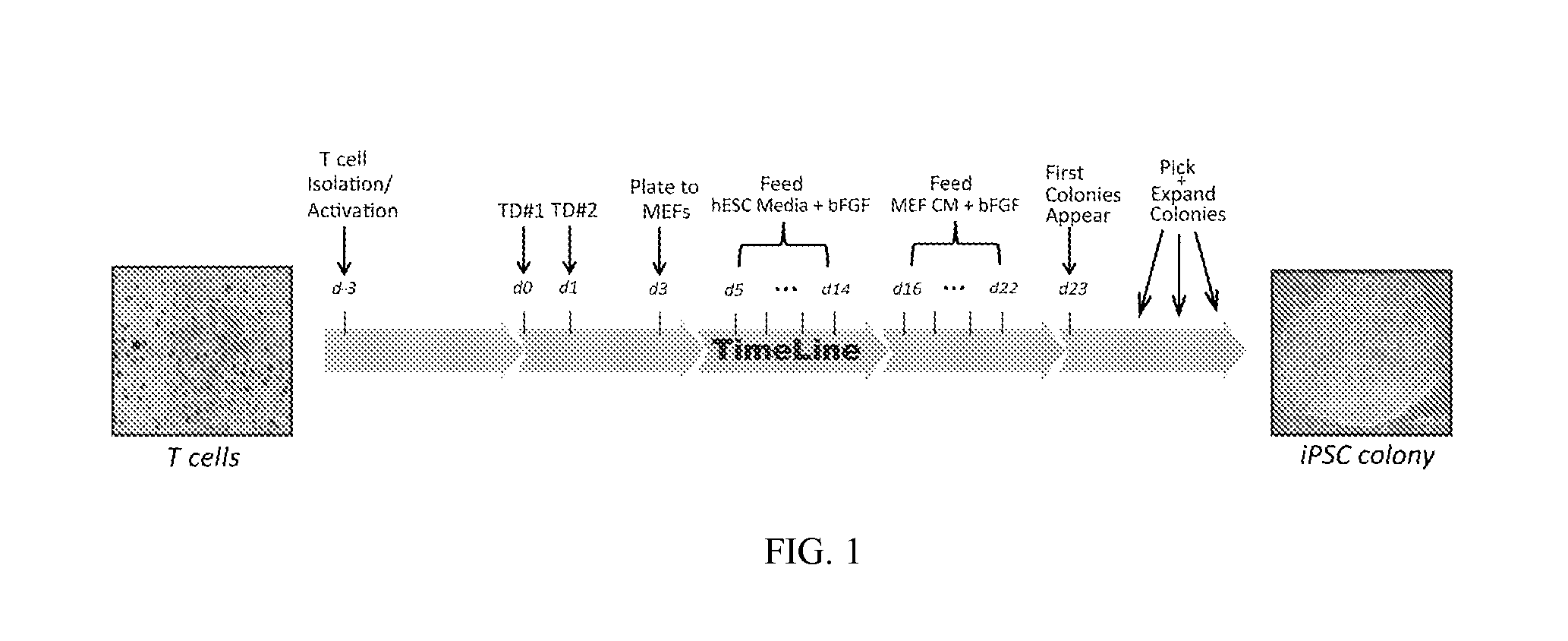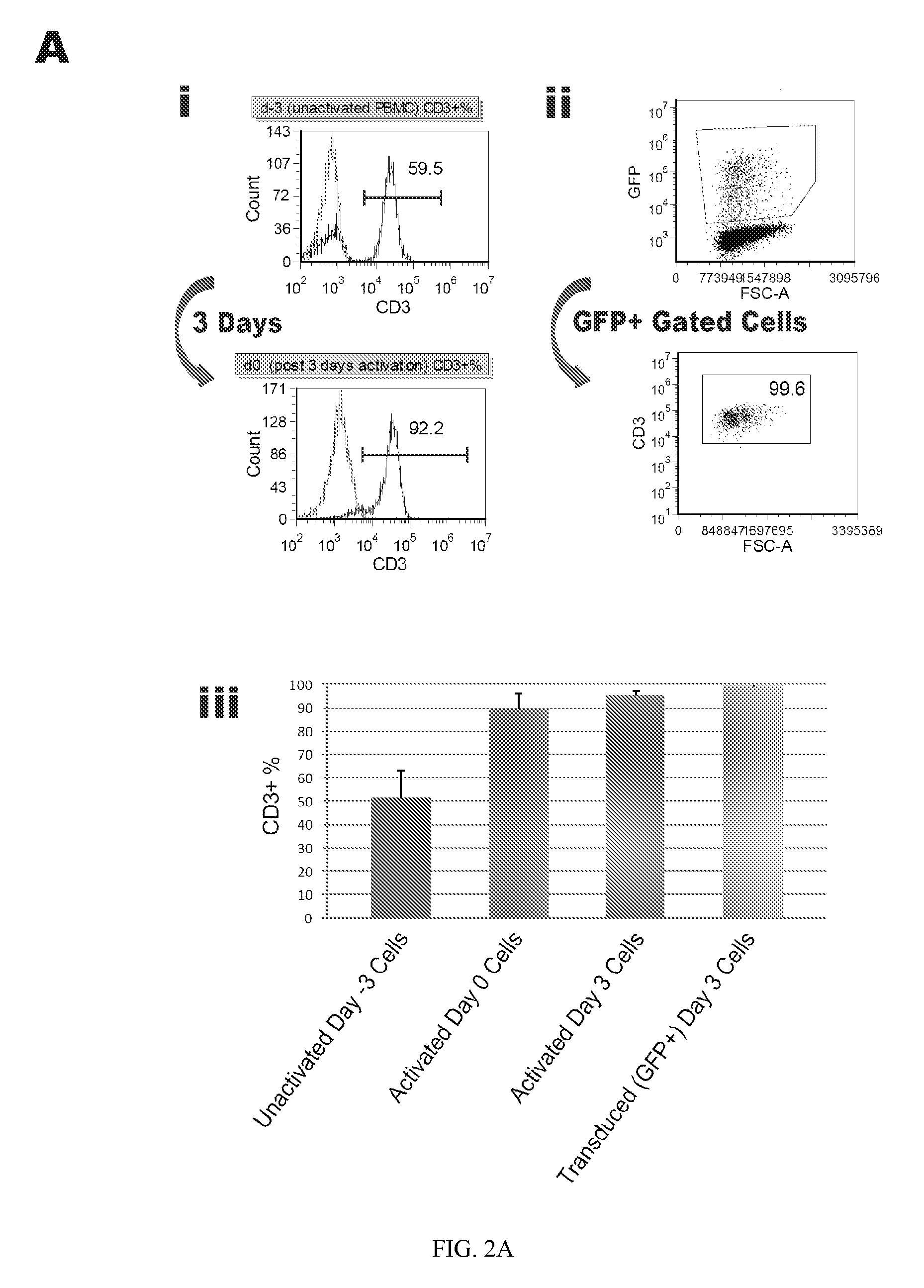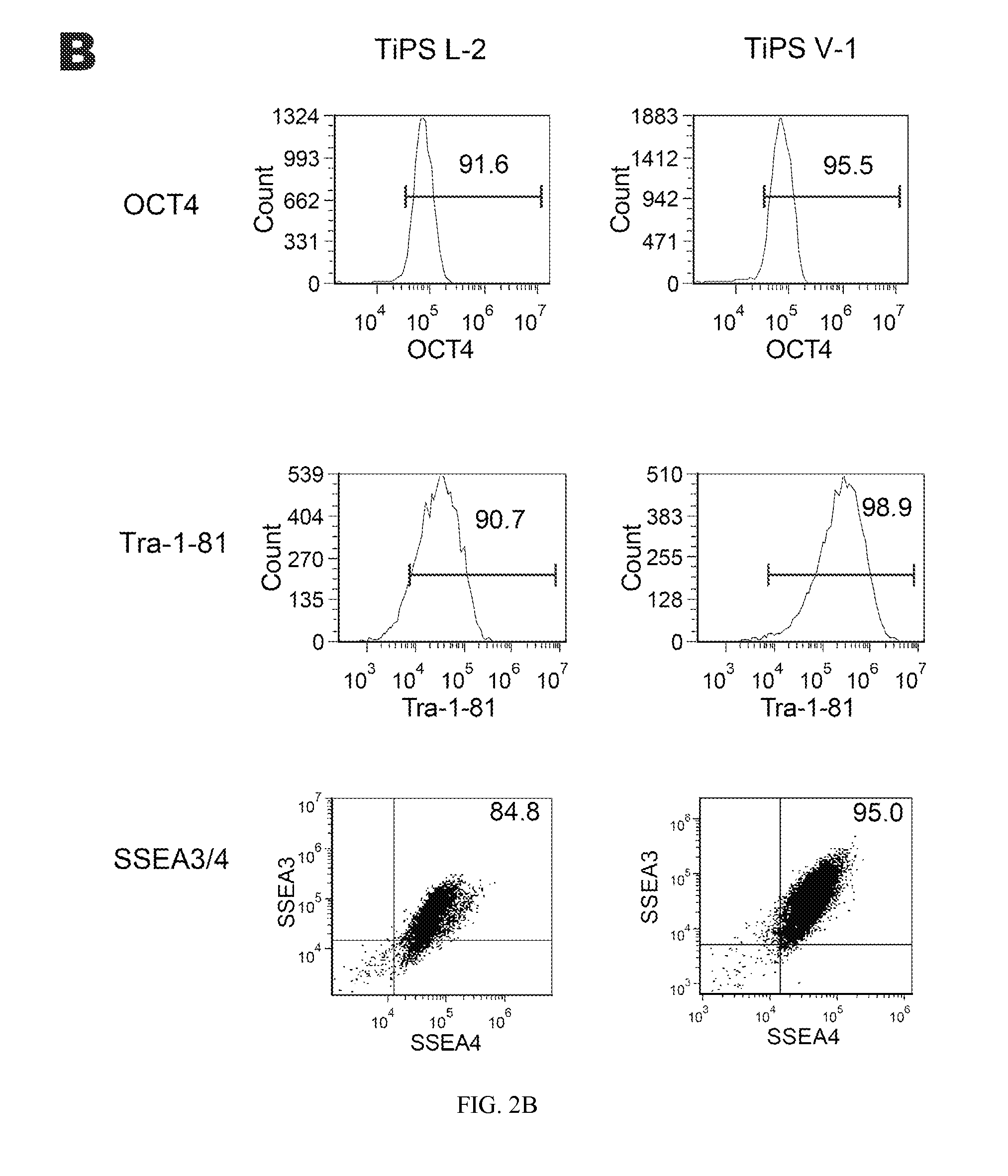Reprogramming T cells and hematopoietic cells
a technology of hematopoietic cells and t cells, applied in the field of molecular biology and stem cells, can solve the problems of reducing efficiency, unable to be used in human trials or approved treatments or human trials using embryonic stem cells, and becoming more difficult to activate in the futur
- Summary
- Abstract
- Description
- Claims
- Application Information
AI Technical Summary
Benefits of technology
Problems solved by technology
Method used
Image
Examples
example 1
Processing Leukophoresis into Aliquots of PBMCs
[0262]The leukophoresis sample (leukopak) was derived from a process in which 8 liters of peripheral blood was circulated through a centrifugal field in order to concentrate mononuclear cells and limit the amount of red blood cells in a resulting volume of approximately 125 ml. The leukopak was further processed as follows: One end of a leukopak bag was swabbed with alcohol swab and cut with razor blade to drain into a flask. The volume was diluted to between approximately 500 ml with Hank's solution and then aliquoted into 16-29 tubes with 50 ml capacity, 30 ml per tube. The tubes were spun at 400 g for 30 minutes with no brake and no acceleration. White liquid was aspirated and new 50 ml tubes were filled up halfway and topped off with 25 ml PBS. This procedure was repeated 2 additional times for a total of 3 washes. Cells were counted before the last wash using a hemacytometer. The yield was between 30-60 tubes of 1×108 cells / tube.
[0...
example 2
T-Cell Activation and Expansion
[0265]Peripheral Blood Mononuclear Cells (PBMCs) were obtained from Biological Specialty Corp (Colmar, Pa.) donor #33231 (“Donor A”). A leukocyte pack was processed with Lymphocyte Separation Medium (Cellgro) to yield PBMCs as described above, which were in turn frozen into aliquots and stored in liquid Nitrogen. Aliquots were thawed and expanded in freshly prepared AIM-V Medium+pen / strep / glutamine (AIV-V / ps / s / g media) (Invitrogen) plus 300 IU / ml rhIL2 (Peprotech) and 10 ng / ml soluble anti-CD3 antibody (OKT3 clone, eBiosciences). Several days after activation exponential growth was verified by CEDEX cell count. After 3 days in culture cells were assayed for T-cell phenotype and then transduced with the reprogramming factors. In one experiment T-cell phenotype was not verified before plating or after transduction. This T-cell activation experiment was repeated multiple times and consistently provided the same result—T-cells made up 90% or more of the cu...
example 3
Retrovirus Production
[0268]Retroviral vectors Nanog RFP, Lin28 RFP, Oct4 eGFP, and Sox2 eGFP were constructed as described previously (see U.S. Application No. 61 / 088,054, incorporated herein by reference). Retroviral vectors c-Myc RFP, Klf4 RFP, Oct4 eGFP, and Sox2 eGFP were constructed similarly. To counteract the possible toxic effects of c-Myc expression, retroviral vector SV40 large T gene (SV40LT)-RFP may be constructed and used in some of the combinations (Yu et al., 2009).
[0269]Details of 293T cell preparation procedure (Table 2): cells were seeded approximately 24 hours prior to transfection. The number of cells necessary to yield adequate volumes of viral supernatant for the experiment being performed was calculated. Media were aspirated and 293T plates were washed with 5 ml PBS and then aspirated. 1 ml of 0.05% Trypsin / EDTA per 10 cm plate was added and distributed evenly. The plates were incubated at room temperature for 2-5 minutes, firmly tapped against hand or wall of...
PUM
| Property | Measurement | Unit |
|---|---|---|
| volume | aaaaa | aaaaa |
| volume | aaaaa | aaaaa |
| volume | aaaaa | aaaaa |
Abstract
Description
Claims
Application Information
 Login to View More
Login to View More - R&D
- Intellectual Property
- Life Sciences
- Materials
- Tech Scout
- Unparalleled Data Quality
- Higher Quality Content
- 60% Fewer Hallucinations
Browse by: Latest US Patents, China's latest patents, Technical Efficacy Thesaurus, Application Domain, Technology Topic, Popular Technical Reports.
© 2025 PatSnap. All rights reserved.Legal|Privacy policy|Modern Slavery Act Transparency Statement|Sitemap|About US| Contact US: help@patsnap.com



